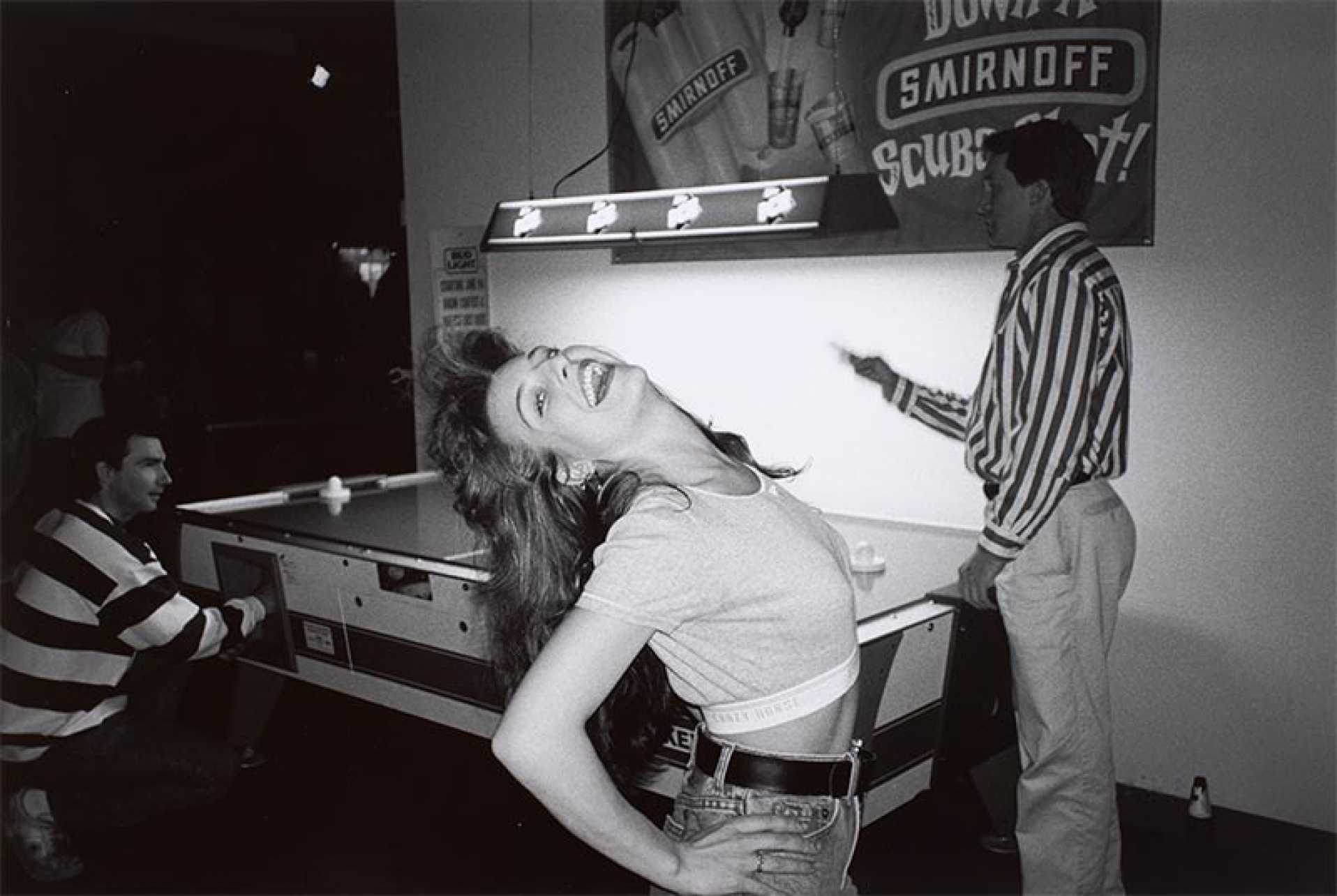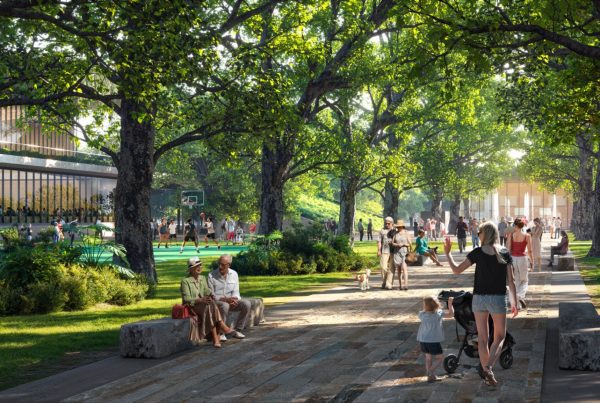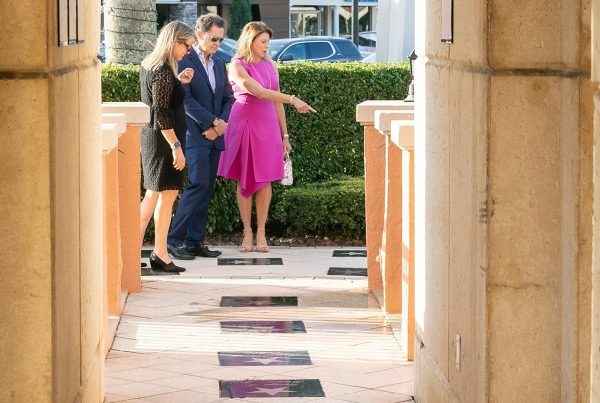Viewing a photograph like Sebastião Salgado’s “Gold Mine, Serra Pelada, Brasil” on a computer simply will not do it justice. Like most great works of art, it demands to be experienced in a museum. Even in the Norton Museum of Art, where it hangs as part of the museum’s personal and engrossing “Presence” exhibition, the wall can hardly contain it. Shot high above the action, the stunning aerial image of a cliff face in the titular mine in northwestern Brazil captures a mountain of miners so enormous in number that it borders on the surreal. It teems with as many bodies as a Cecil De Mille movie set, but at least in the latter, the extras could enjoy the craft services and probably sleep in a comfortable bed at the end of the shoot.
In “Presence,” the photograph hangs next to another Salgado image, of a single worker carrying a container of presumably gold on his shoulders, a proverbial burden made literal. The contrast between these two evocations from the same time and place is striking: The wide angle and the close-up, the one and the million, the laborer and the labor itself. It’s everything you need to know about the dehumanizing drudgery of the occupation it presents, and together they stand as a testament to the power of photography to illuminate hardship.
The photos are part of the “Politics, Labor and Justice” portion of “Presence,” a four-pronged mini-survey of the extraordinary collection of Judy Glickman Lauder. I say “mini” because the 110 photographs by 56 artists constitute only a fifth of her collection. Not all of the images deliver messages with the clarity and potency or Salgado’s reportage; some are just fun. But they all reflect their collector’s personality. Lauder is an omnivorous enthusiast of the photograph, particularly in its purest form, as a black-and-white interplay of light and shadow, artist and subject, form and abstraction.

Perhaps more than anything else, the photograph is a document, a proof of life in a particular place and time. “Presence” opens with a suite of photographs that crystallizes the medium’s ability to demarcate the temporal: With Irving Bennett Ellis’ “Judy, On Her Birthday, 1939-1956,” Ellis photographed his daughter standing in front of her family home each birthday for a 15-year period. She changes, the style of her clothing changes (only the front door stays the same), and the cumulative effect is that we watch a child grow into a woman in the time it takes to scan a gallery wall.
The series ushers in “Portraits, Admiration and Delight,” the breeziest and busiest of the four sections. Its highlights include Helmut Newton’s “Paloma Picasso,” in which his subject holds a glass over her exposed breast in a cheeky moment of self-censorship; and a Richard Avedon tableaux of Audrey Hepburn and friends at a bar, staged as if it’s an anthropological diorama: This is what the wealthy homo sapien at leisure looks like.

In Bruce Davidson’s hazy, soft-focus “Blues Bar on Chicago’s South Side,” a couple sways near a jukebox, and you can practically smell the booze and sense the pheromones. Avedon’s portrait of Isak Dinesen captures the author in a high angle, wearing a fortress of black fur. I’m particularly fond of William Klein’s “Hat and Five Roses,” which describes the headgear of the woman he photographed, the smoke of her cigarette wafting into the negative space at the top of the frame.
“Expressions of Place” contains some of the most delightful pieces in Lauder’s collection, including “A Llama in Times Square,” which needs little explanation to convey its charms, and Elliott Erwitt’s “New York City,” a sight gag in which a bulldog, positioned on its owners’ legs, seems to be sprouting the appendages itself. Max Yavno’s “Cable Car, San Francisco” finds hilarity in the mundane, as porters comically lean on either side of the car like a still from a Jacques Tati comedy.
Nostalgia and progress share the canvas of Ogle Winston Link’s “Hot Shot Eastbound, Ieager, West Virginia, 1956,” in which a locomotive speeds by a drive-in movie theater, where a couple snuggles in a car while watching a plane on the projection screen—three methods of transportation linked by one concise image.
The smallest section of “Presence” is “Specters of History,” but it’s among the most impactful. Its centerpiece is a series of Lauder’s own photographs taken at Auschwitz from 1988 to 1991. “Cell at Auschwitz” bears witness to the prisoners who lived and died there, revealing walls scratched with their words and doodles. “Execution Wall” achieves much the same but is heightened through the use of infrared film to reveal the bullet holes that would be obscured in traditional photographs of the space. In Lauder’s horrifying remembrance, they appear like snowflakes frozen in time.
Which brings us back to “Politics, Labor and Justice,” where the aforementioned Sebastião Salgado photographs share space with a sprawling portrait of the famous Chicago 7, the antiwar protestors whose trial became a cause célèbre for the 1960s counterculture; and Paul Fusco’s iconic accounting of Robert F. Kennedy’s funeral train, in which a family is lined up in ascending order of height, like nesting dolls, to pay tribute to the fallen senator.

You might want to carve out your most viewing time in this section, which also includes Gordon Parks’ subversive, masterful “American Gothic” and James Karales’ “Selma to Montgomery March,” where storm clouds consume the upper half of the image, perhaps prophesying turbulence to come. But of all the images in “Presence,” the one that might just stick with me the longest is Danny Lyon’s “Sixteenth Street Baptist Church Bombing.” Following the tragic attack that killed four Black girls in 1963, Lyon snapped the reaction of a woman, her expression one of anguish and helplessness and she stares into the camera, as if begging for answers the photographer cannot provide.
“Presence” runs through March 10 at Norton Museum of Art, 1450 S. Dixie Highway, West Palm Beach. Admission Costs $18 adults, $15 for seniors and $5 for students. Call 561/832-5196 or visit norton.org.
For more of Boca magazine’s arts and entertainment coverage, click here.







